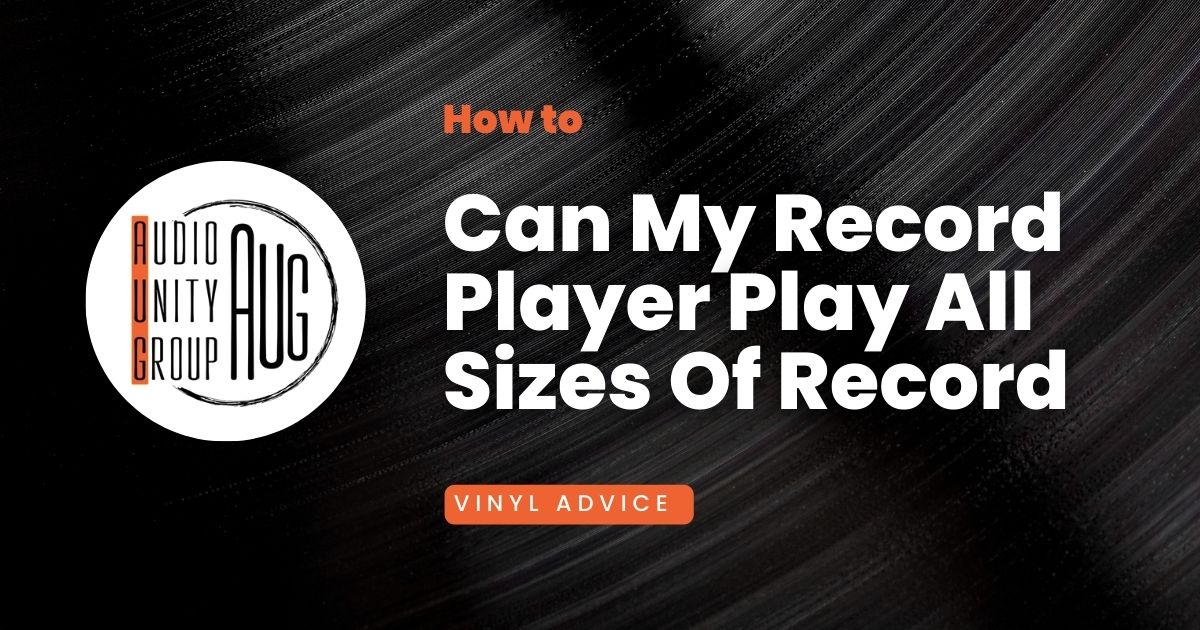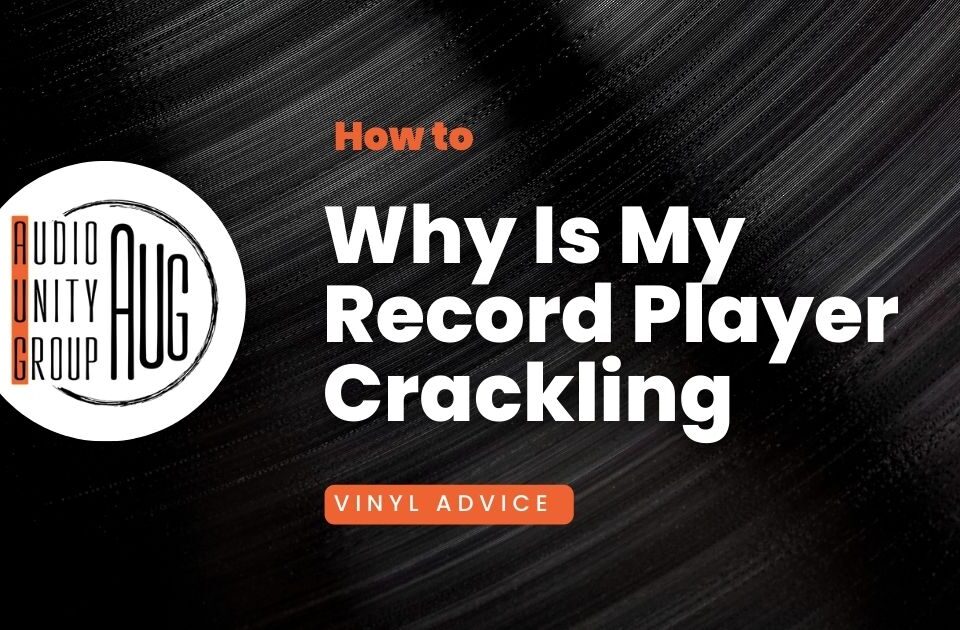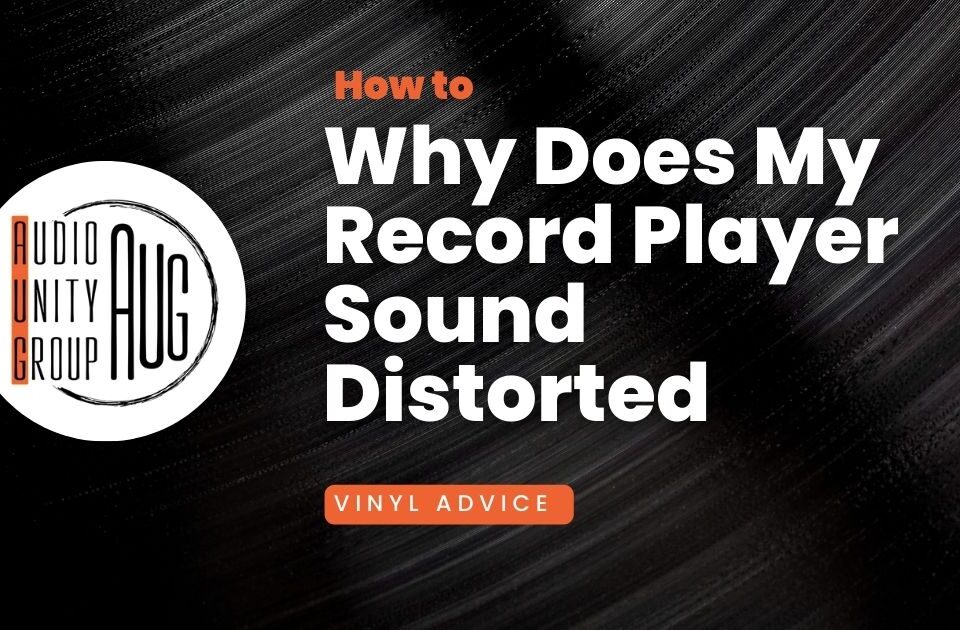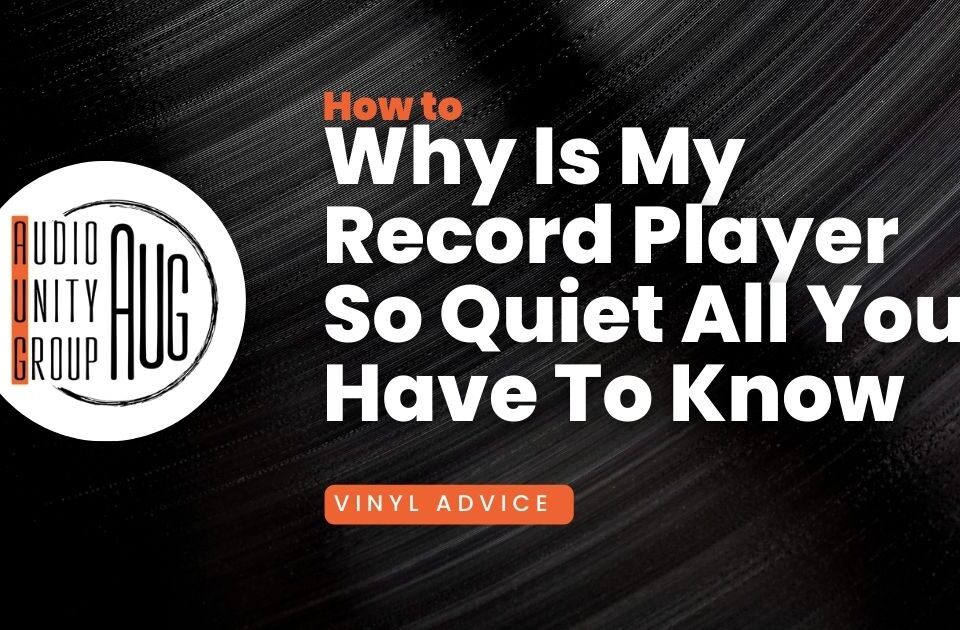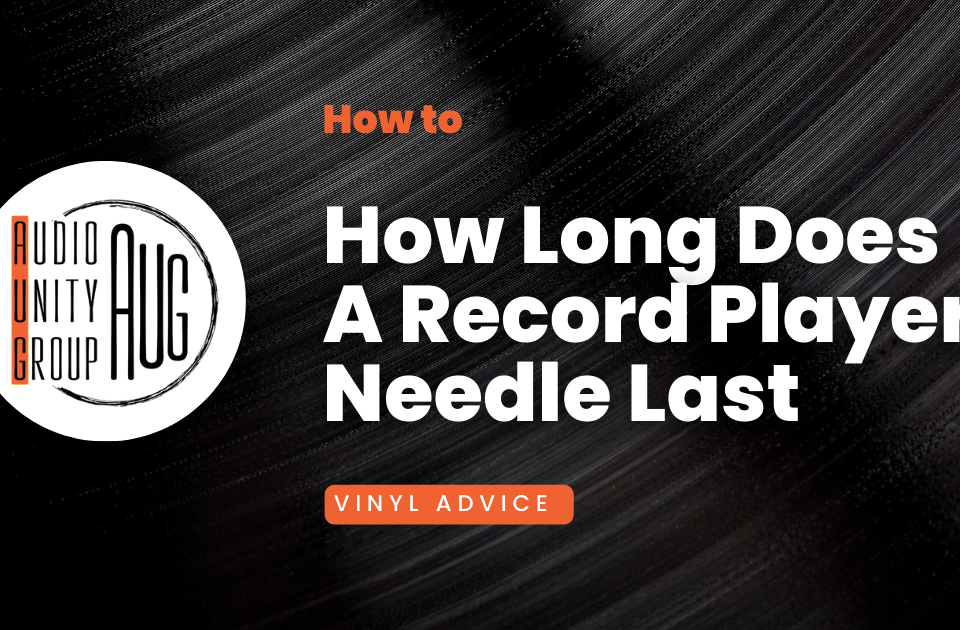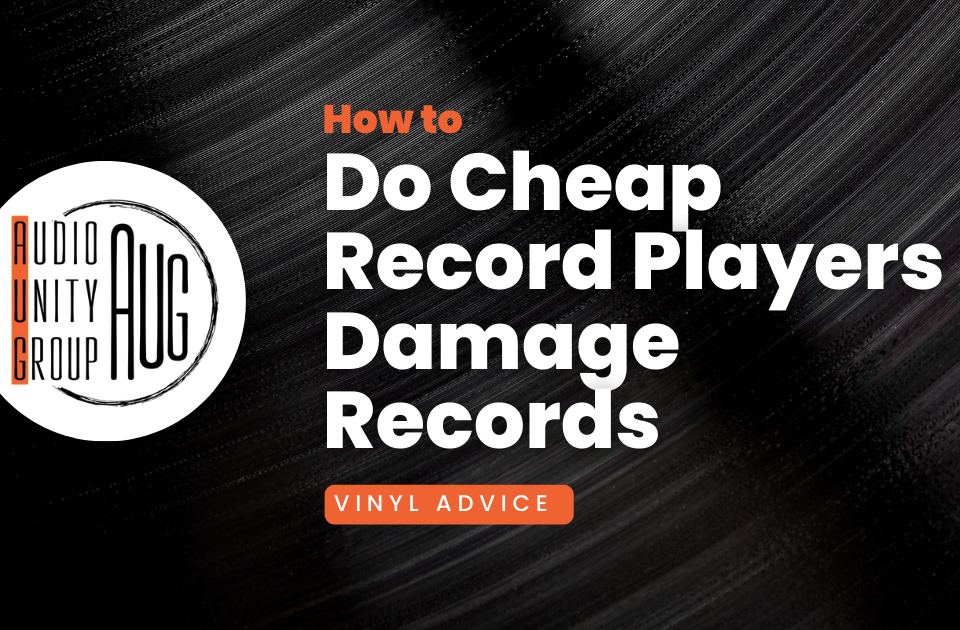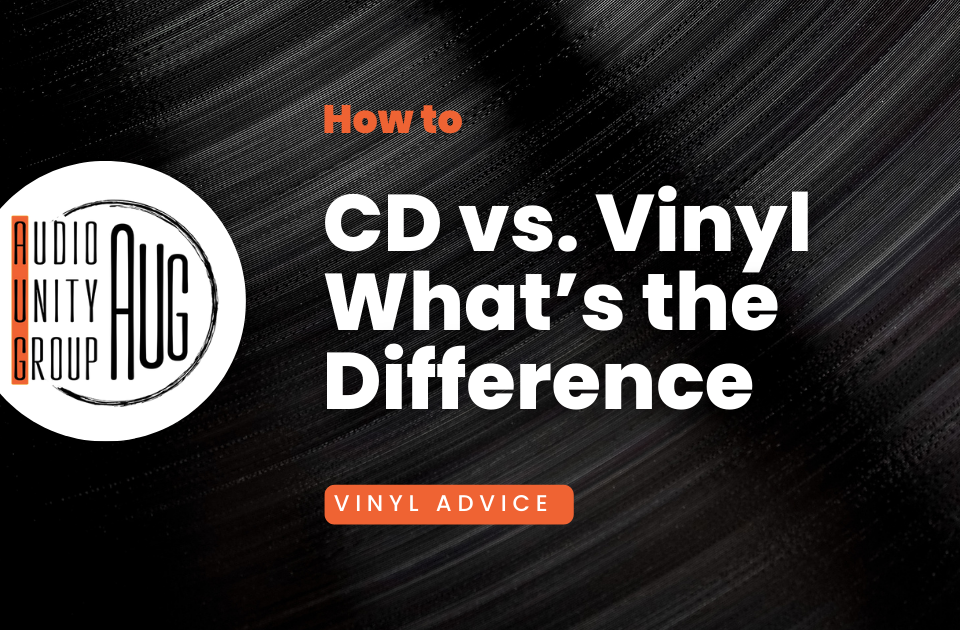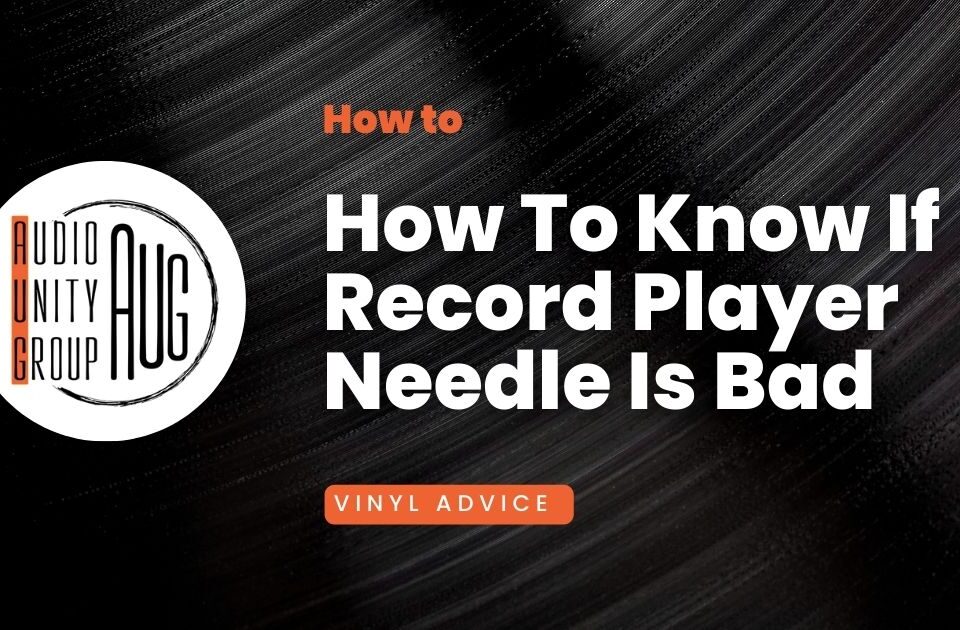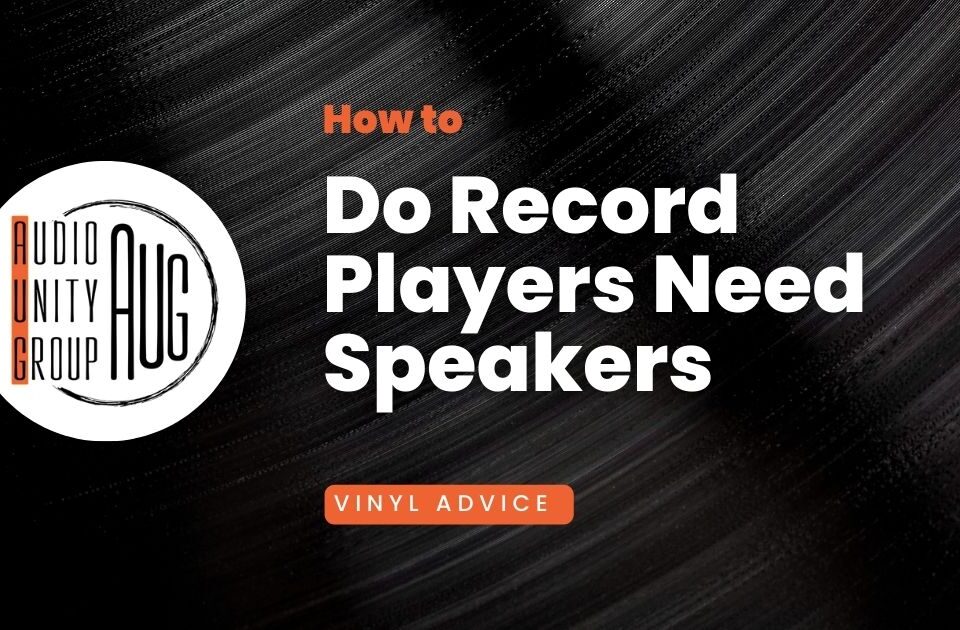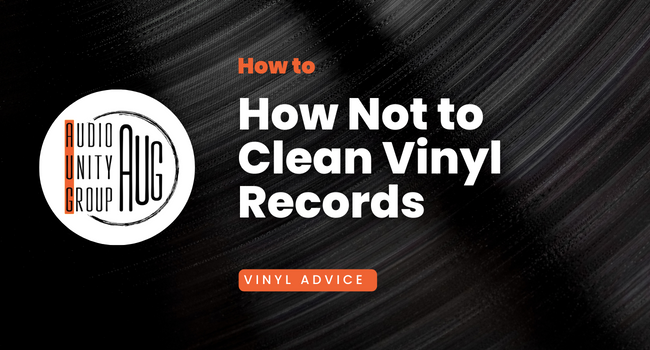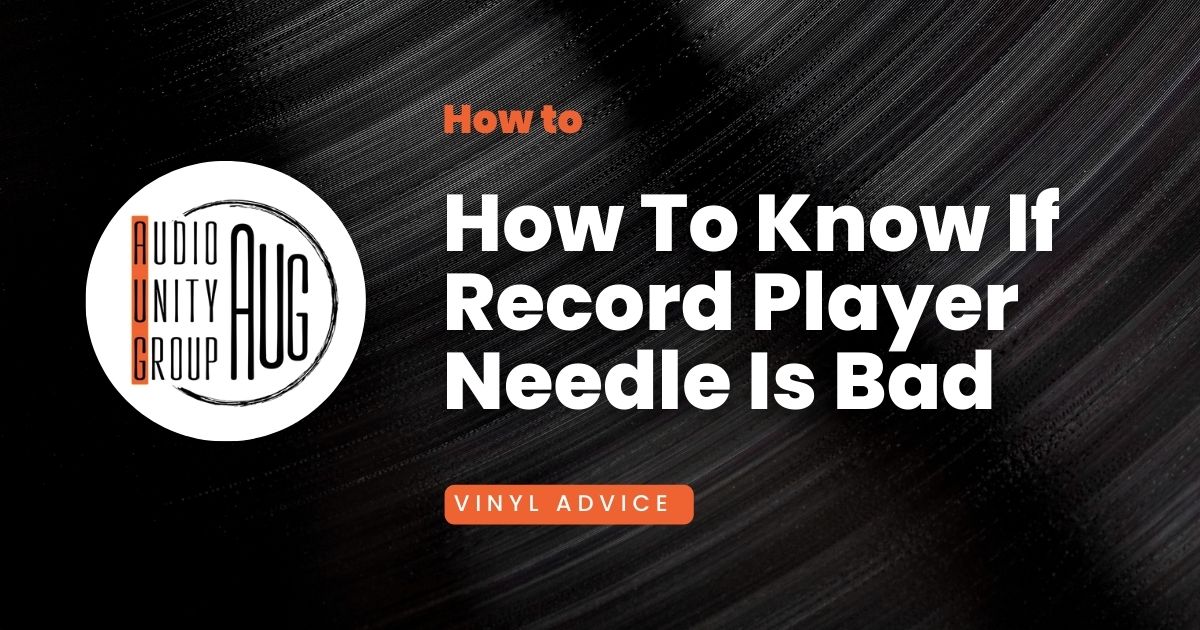
How To Know If Record Player Needle Is Bad: The Answers
May 21, 2023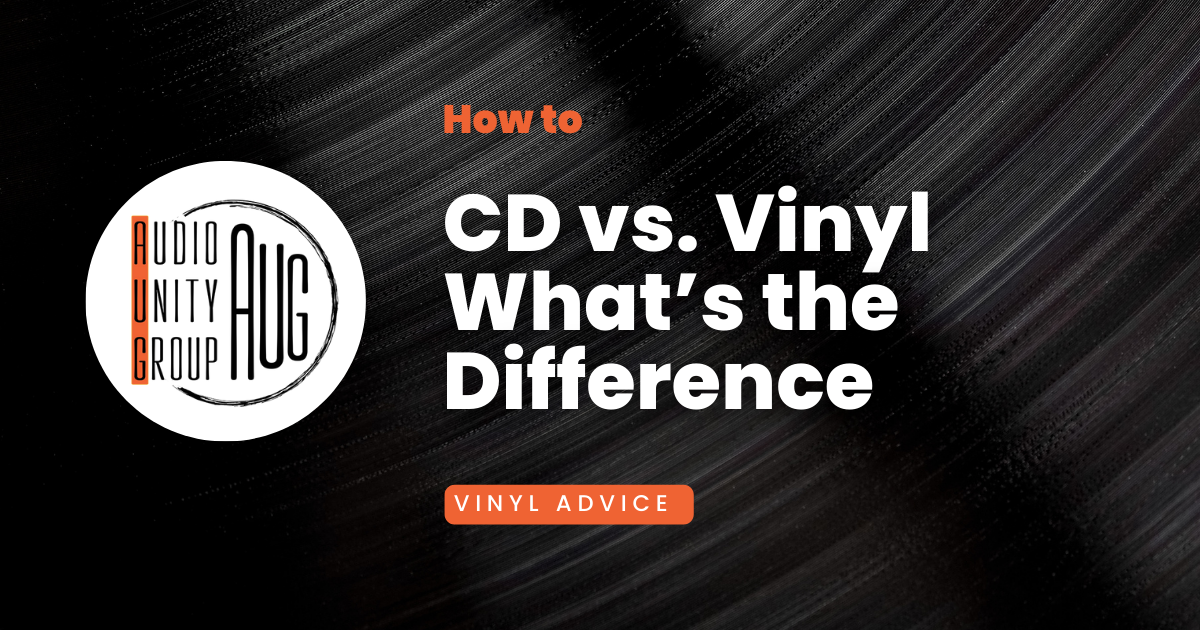
CD vs Vinyl What’s The Difference
June 9, 2023Last Updated on January 24, 2025 by Tom S. Ray
The sound of a record spinning on your turntable is timeless, but have you ever wondered if all records can be played on any record player? Not all forms of vinyl are compatible with every model.
Key Takeaways
- Different sizes and speeds of vinyl records determine the compatibility with different record players, leading to varying sound quality.
- Manual turntables offer greater control over playback sessions while automated ones provide ease of use.
- Important factors to consider when choosing a record player are tonearm length & weight capacity, platter size compatibility, speed adjustment and cartridge compatibility.
- Vintage record players have unique features such as anti vibration components & RCA outputs for optimum audio experience .
Understanding Vinyl Record Sizes And Speeds
The two most common record sizes are 12-inch and 7-inch, with 10-inch records being less prevalent.
From sound quality to compatibility, there are several factors to consider when deciding between vinyl and CDs. If you’re interested in learning more about how these two mediums stack up against each other, take a look at our ‘CD vs Vinyl: What’s The Difference?‘ article.
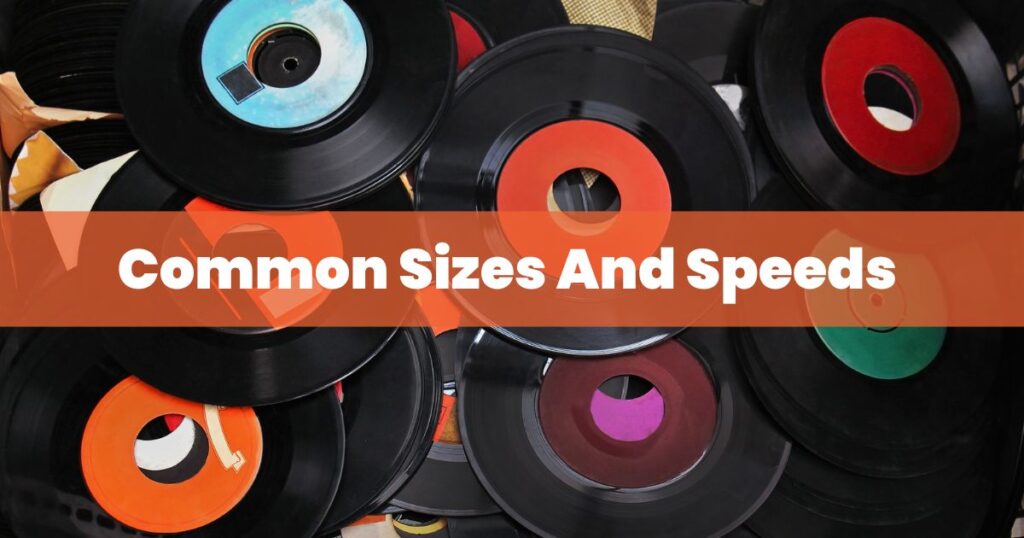
Common Sizes And Speeds Of Records
When it comes to vinyl records, there are two main types of sizes and three speeds which determine their sound quality and compatibility with different record players.
The most common record sizes are 7-inch, 10-inch and 12 inch discs, although other sizes occasionally appear throughout history.
They all have grooves that run along its surface in a spiral fashion from the center outwards.
The speed at which these records spin affects how many times per minute they make one revolution: 33 RPM, 45 RPM or 78RPM (also referred to as “78s”).
Playing the wrong speed can cause your needle to skip or make your music distorted – this is why it’s important to know what your player can play before buying any new vinyl.
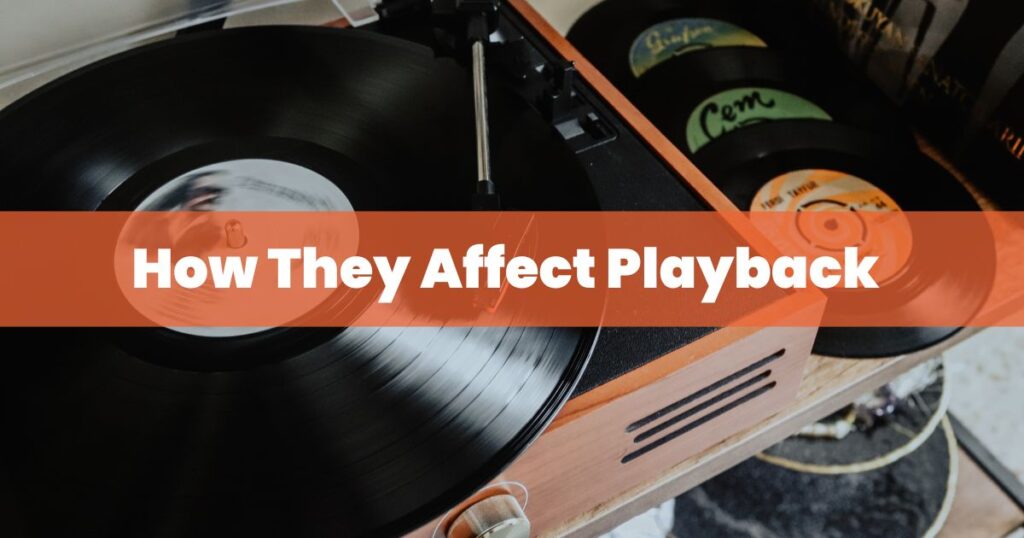
How They Affect Playback On A Record Player
Vinyl record sizes and speeds are essential factors to consider when choosing a record player to play your favourite vinyl records. Generally, the two most popular sizes of records today are 12-inch and 7-inch discs, but each size comes in different speeds.
Different speeds affect the playback performance on a record player, from sound quality to the potential for damage if it’s not set up correctly.
For instance, 78 rpm records provide lower audio frequencies and can produce more unwanted noise due to higher groove wear compared with 33 ⅓ or 45 rpm records which allow for much more information like detailed bass response and dynamics.
Lastly, inadequate tonearm weight can lead to excessive cartridge tracking force which can damage both your needle and LP grooves over time — so make sure that the turntable you choose is capable of handling the size and speed requirements of your chosen disk format.
Types Of Record Players And Compatibility
To get the most out of your record player, understanding its compatibility with different sizes and types of records is key.
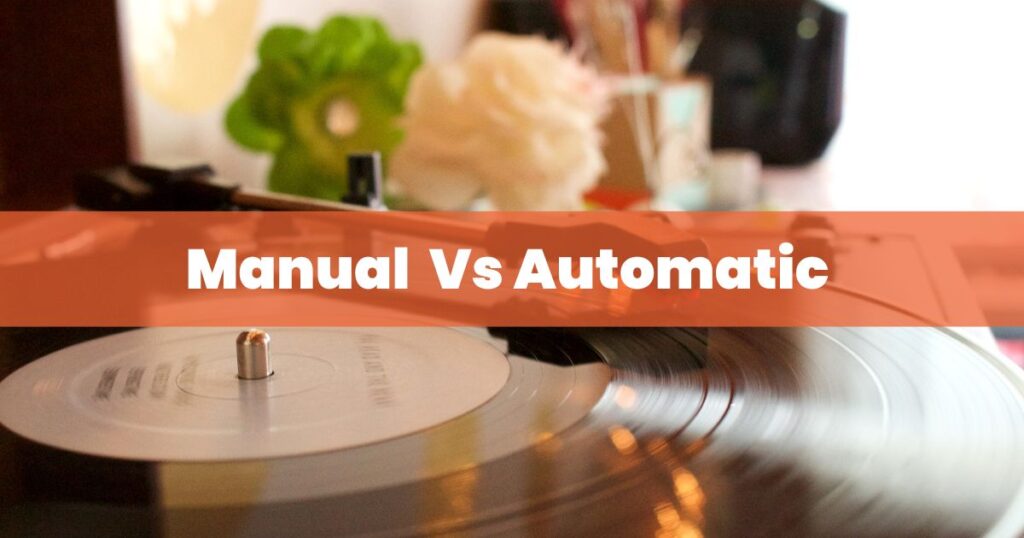
Manual Turntable Vs Automatic Turntable
The choice between manual and automatic turntables can be daunting for music lovers, but understanding the pros and cons of each type of record player is important before choosing one.
Manual turntables force the user to take full control of cueing the tonearm onto the record with precision accuracy. Since manually placing the stylus into a record’s groove relies on hand-eye coordination, it allows for deeper engagement with sound as opposed to quickly pressing a start button and being done.
However, automated arms make playing records much more effortless as they perform all steps needed once pressed; automats keep tone arms level at all times while automatically selecting recordings without touching any buttons or knobs.
This convenience comes in handy especially when dust builds up on them due to age leading users to often avoid using old models altogether– upgradeable features also ensure years of use – something many collector’s value when making investment purchasing decisions ( Brands such as Technics SL1200G and U-turn Orbit are particularly lauded by experts ).
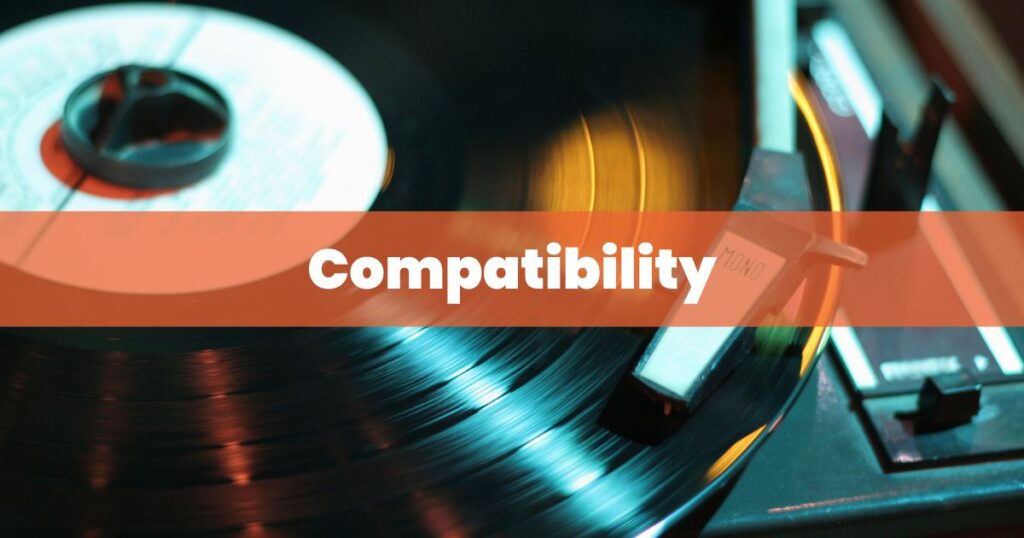
Compatibility With Different Record Sizes And Speeds
Understanding the different record sizes and speeds and choosing the right type of turntable for your vinyl collection is essential to enjoying your music. While it’s true that not all record players can play all sizes and speeds of vinyl records, they do come in three standard size variations: 7-inch, 10-inch, and 12-inch.
The speed (and therefore how long a song plays) depends on how many revolutions per minute (rpm) the platter spins at—typically 33 rpm, 45 rpm or 78 rpm. A turntable’s ability to play a given sized record depends on its tonearm length and weight capacity as well as whether or not it has adjustable speed settings which are necessary when playing 78 rpm records.
It’s also important that its platter size be compatible since larger records should spin on a large enough spindle for optimal sound quality. Additionally, cartridge compatibility is key since some types won’t work with certain styles of record player but selecting one that works with multiple cartridges helps make sure it’ll fit your needs regardless of what kind of vinyl you choose to buy.
Lastly, checking each machine’s overall weight capacity lets you know if heavier records will pose any problems down the line before you purchase them or when trying out new models at your local store.
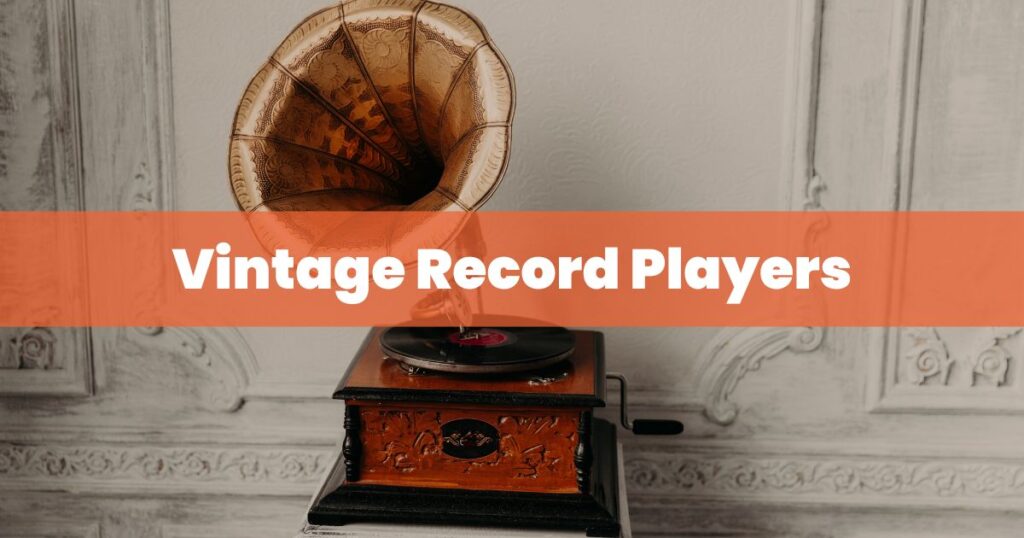
Unique Features Of Vintage Record Players
Vintage record players have an unmistakable charm that cannot be found in modern models. For record enthusiasts who want to deepen their connection with music, a vintage turntable offers more than just playing vinyl records – it provides an experience like no other.
One of the defining features of a vintage record player is its cast iron platter and tonearm which are designed to minimise resonance while tracking the grooves on your vinyl disc.
The turntable itself usually consists of two sets of flat belts driven by a motor, one for setting the speed and another for driving the platter. This design gives users greater control over playback speeds as they can adjust both according to their preference or requirements.
Additionally, many vintage record players have adjustable counterweights at the end of their tonearms which help maintain proper stylus force when tracking any size or weight of vinyl records.
Another major advantage is that most vintage turntables come equipped with RCA outputs which means you can achieve optimum sound quality from any compatible external audio source such as headphones, speakers etc..
Factors To Consider For Record Player Compatibility
When choosing a record player, it’s important to look at the tonearm length and weight capacity, turntable speed adjustment, platter size compatibility, cartridge compatibility and record weight capacity.
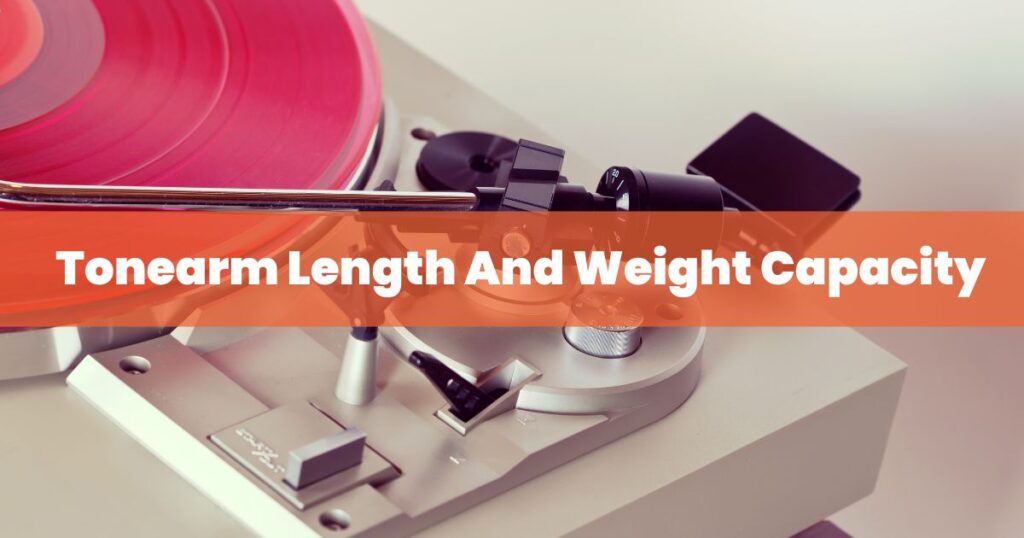
Tonearm Length And Weight Capacity
The length and weight capacity of the tonearm are incredibly important factors to consider when choosing a record player, as they can affect the playback quality and even cause damage to your vinyl records.
When playing your vinyl records, if the tonearm is too heavy for it, it will put too much pressure on the grooves and cause excessive wear over time. This can lead you to experience loss of sound clarity or clicks during playback.
There are various designs available in terms of tonearms – some turntables have linear tracking arms that move side-to-side while some turntables offer an S-shape design with greater mass due to its longer arm length.
The latter provides superior sound performance compared to most other types because it follows a slight arc in order not to deviate from its groove’s path across the entire playing surface of a record side, resulting in better fidelity and minimised skipping or distortion issues.
Moreover, if your budget allows for it investing into more premium materials such as aluminium could result into significantly enhanced purity of sound by reducing resonance build up within their bodywork structure itself due to their anti-vibration effect.
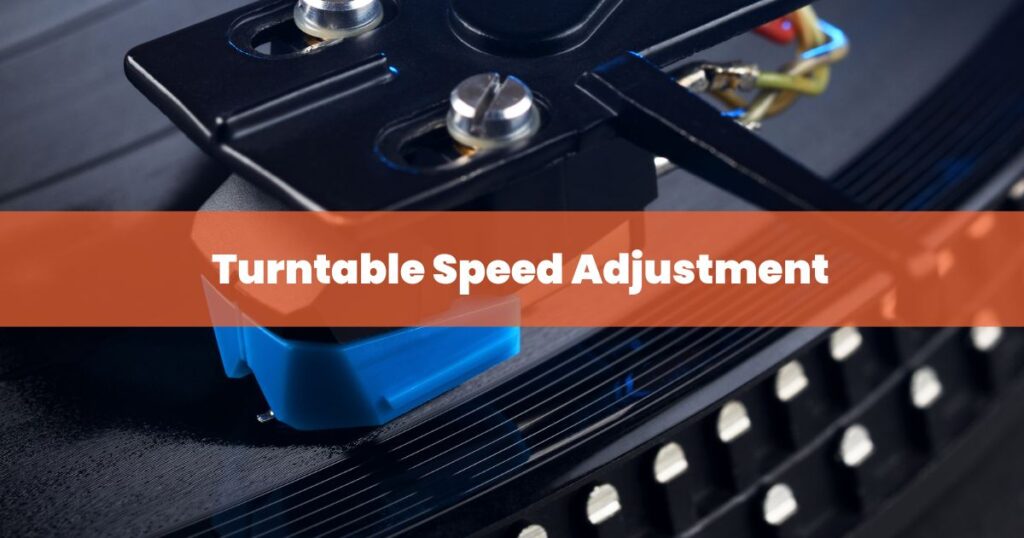
Turntable Speed Adjustment
Adjusting the speed of a record player’s turntable is key to ensuring optimal sound quality and preventing damage to both the record player and your records. Records are designed to be played at different speeds, though they all function within three main categories: 33 1/3, 45, or 78 RPM.
It’s important for collectors to know what size their records are and adjust their turntables accordingly before queuing up that first LP. Doing so ensures that you’re playing back the music in near-perfect audio fidelity; too fast or too slow playback can affect how a groove performs and make notes distort toward terrible results.
Thankfully today most modern turntables come with built-in adjustment knobs which enable users to switch between speeds quickly and easily mid-session without having any technical know-how on troubleshooting a motor unit.
Speaking of motors—some vintage models engage analog mechanisms where speed needs manual tinkering through springs, screws, gears etc., some people prefer these over digital units as they offer an organic feeling when spinning vinyl but beginners should always consult an expert if working with these machines.
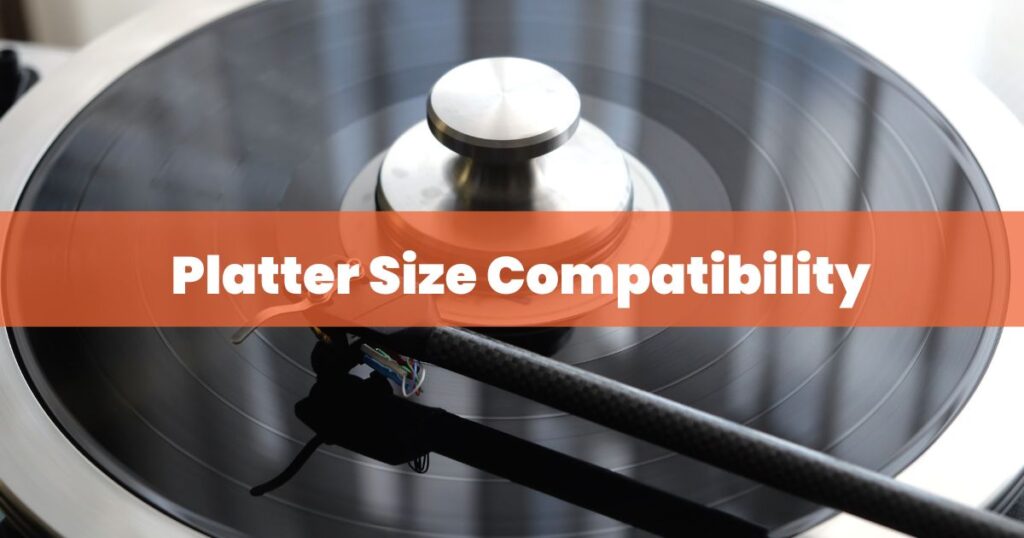
Platter Size Compatibility
When choosing a record player or turntable, it is important to consider the size of the platter in relation to the different sizes of vinyl records that you may wish to play.
Different sized records require a different type of platter as this affects their playback quality. A platter which is too small for some larger sizes will make them wobble while they are spinning and can cause issues with sound quality, while an overly large platter could affect 45 rpm records by causing them speed up and give off a distorted sound.
It’s therefore important to ensure that your turntable has the right-sized platter for any given vinyl size, so always be sure check its compatibility before buying, whether through reviews online or speaking with other aficionados.
When using larger plates on smaller records, it is particularly essential to pay attention when setting up your turntable as incorrect alignment can cause uncomfortable noises during playback; only ever use Lightweight felt mats such as those produced by Pure Vinyl LP.
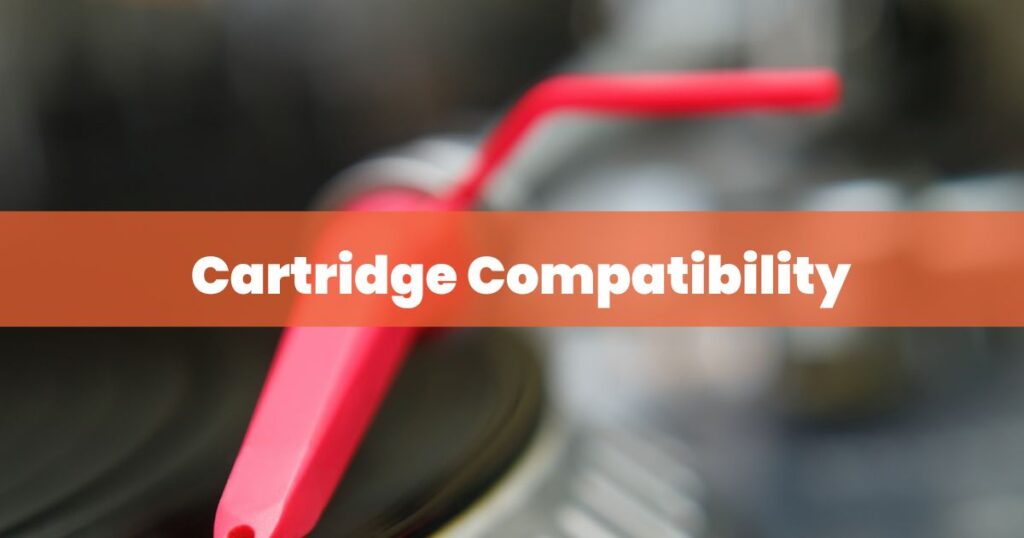
Cartridge Compatibility
When playing vinyl records on a turntable, cartridge compatibility is an important consideration. Cartridges are not universal because there are two main types that fit differently on turntables; P-Mount and Half-Inch.
The phono cartridge is a key factor in the sound reproduction system and can strongly affect the life of your system. Turntable models can be compatible with only one type of cartridge or offer flexibility by being able to work with either moving magnet (MM) or moving coil (MC) cartridges.
For example, some models such as Audio-Technica’s AT-LP60XBT may have different settings for Type I, Type II and Type III phono cartridges—or Play & Exchange™ technology allowing interchangeable cartridges to use from PLAY TYPE 1 – MM or PLAY TYPE 2 – MC categories without any complex set up process needed.
Other record players like Pro‑Ject Debut Carbon DC might only accommodate one type of phonograph cartridge– but after swapping out its Ortofon 2M red for an alternative model within the same range will immediately provide improved sonic results when using proprietary accessories designed for optimal signal response.
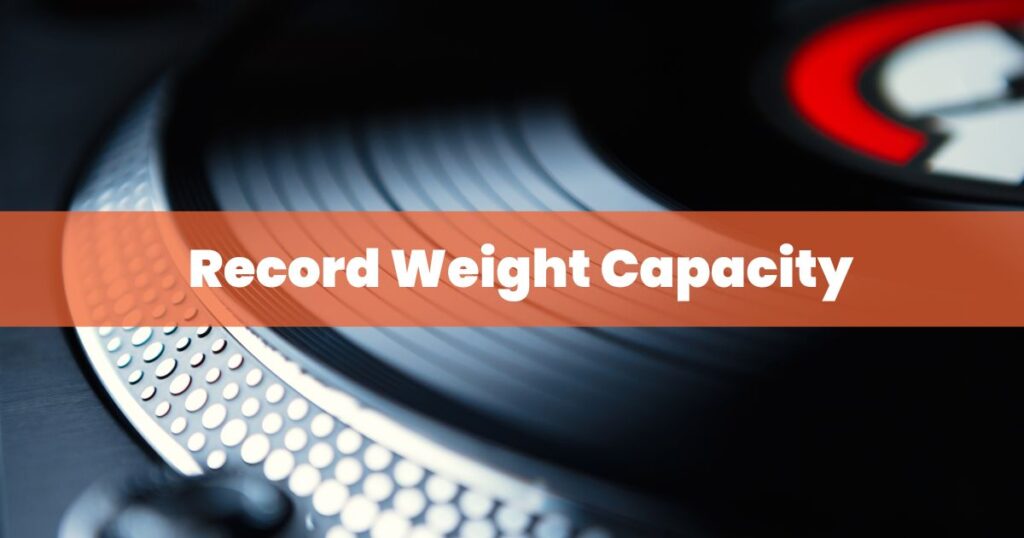
Record Weight Capacity
The weight of a vinyl record can dramatically affect the quality of sound that is produced by your record player. Lighter records tend to produce more surface noise, as the stylus needs bottom-end weight to drive it into the grooves and give it enough stability.
This is especially important if you are playing records with small or shallow grooves, as these need sufficient force to perform properly on your turntable.
It’s recommended that you use hefty 180 gram releases for greater bass tones and longer playback time when available. Generally speaking, authentic presses have higher distance between grooves which allows less distortion in playback even at lower volume levels; this ups your music enjoyment game too! Furthermore, selecting heavier clamps like titanium or brass will help improve track accuracy by eliminating resonance feedback typically created during playbacks due to lightened tonearms.
All in All
If you are trying to decide which record player is right for your vinyl collection, it is important to pay attention to the size and type of records that need to be played.
This involves understanding the sizes and speeds of records; popular speeds include 33, 45, and 78 RPM, but not all turntables can play the latter. It’s also key to consider factors such as tonearm length and weight capacity, Turntable speed adjustment , Platter size compatibility , Cartridge compatibility and Record weight capacity .
There a variety of quality record players on the market depending on what kind of music listeners want out of their experience—from classic manual turntables like vintage models from decades ago to modern automated versions with extra recording capabilities .
Thanks,
Tom
FAQ
Can my turntable play all sizes of records in my vinyl collection?
Most modern record players are able to play the three common sizes of records: 7-inch, 10-inch, and 12-inch. However, it is essential to check your record player’s specifications to ensure it supports these sizes and can switch between the different speeds required for each size (33 rpm and 45 rpm for most records).
How does the size of the record affect sound quality?
The size of a record can impact the sound quality because larger records typically have more surface area, allowing for more information to be stored in the grooves. The more information stored, the better the audio quality. However, the quality also depends on other factors such as the recording process and the condition of the vinyl record itself.
How much playing time can different record sizes hold?
The playing time of a record depends on its size and speed. A 12-inch record spinning at 33 rpm can hold around 22 minutes of music per side, while a 7-inch record spinning at 45 rpm can hold about 5 minutes of music per side. Keep in mind that these times can vary depending on the specific record and how it was produced.
Will my record player automatically adjust to the correct speed for different records?
Some record players have automatic speed adjustment features, while others may require manual adjustment. It is essential to consult your turntable’s user manual for instructions on changing between 33 rpm and 45 rpm for different records.
Is it possible for record players to play all sizes of records without changing any setting?
Some record players may automatically detect and adjust the settings to accommodate different record sizes, but most require manual adjustments. Consult your turntable’s user manual to determine if your model has this feature and how to switch between different sizes and speeds.
Does the surface of the record affect its sound quality?
Yes, the surface of the record plays a crucial role in sound quality. Scratches, dust, or any other form of damage on the vinyl record’s surface can cause distortion or reduced audio quality. Proper handling and storage of your records are essential to preserving their sound quality.
Has there been a standard size for records throughout history, or has the size changed over time?
The size of records has evolved over time. Early records were typically 10 inches in diameter, but the introduction of the 12-inch record by Columbia Records in the early 20th century revolutionized the industry. In the 1950s, the 7-inch record became popular as well. Generally, vinyl records come in 7-inch, 10-inch, and 12-inch sizes.
How can I tell the difference between a 33 rpm record and a 45 rpm record based on their size?
Generally, 12-inch records are 33 rpm, while 7-inch records are 45 rpm. However, there may be exceptions, so it is essential to check the label for the correct speed before playing the record. Some 10-inch records can be either 33 rpm or 45 rpm, so always verify the proper speed to avoid damaging your records or turntable.
Do smaller size records, like 7-inch records, have worse audio quality than larger size records?
Smaller records tend to have less surface area for storing information, which may result in slightly worse audio quality compared to larger records. However, the difference may not be noticeable to most listeners, and other factors, such as the recording process and the condition of the record, also impact the overall sound quality.
Can a record player be modified to play records of a size not originally supported by the turntable?
While it may be technically possible to modify a record player to accommodate different record sizes, it is generally not recommended. Tampering with your turntable’s components can lead to damage to both the record player and your records. It is safer and more practical to purchase a record player that supports all sizes and speeds of records you want to play.



